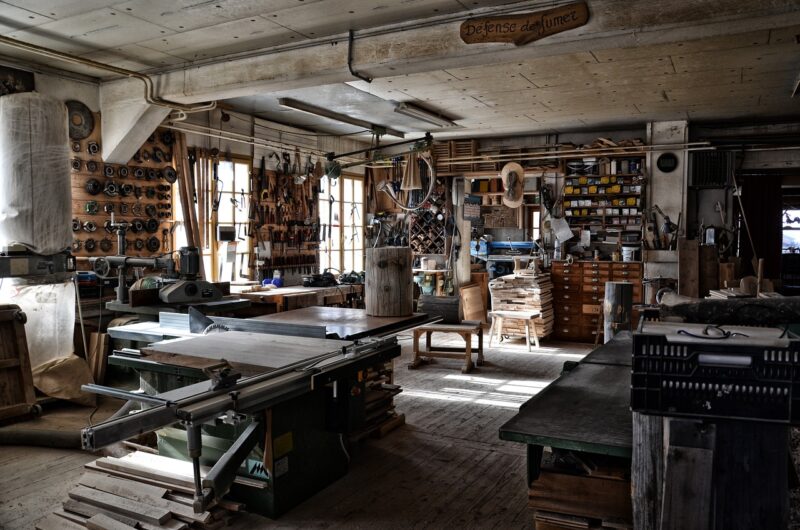The Strangest Beauty Devices in History That People Actually Used
November 15, 2024

Beauty, as they say, is in the eye of the beholder—yet across different cultures and eras, the pursuit of beauty has encouraged some of the most bizarre and intriguing inventions. Throughout history, women (and men) have often turned to a variety of strange beauty devices that, to the modern eye, might seem completely ludicrous. In this article, we delve into some of the strangest beauty devices that people actually used, their purposes, and how they reflect the beauty standards of their times.
1. The Iron for Hair: 18th Century Hair Curling Irons
During the 18th century, lavish hairstyles were all the rage among the aristocracy. Women sported towering wigs piled high with curls and adorned with feathers, jewels, and even bird cages! To achieve these elaborate styles, women would use heated iron curlers that resemble small, iron rods.
But these devices were not without risks. The curlers were heated over an open flame, meaning that burns were a common occurrence. The desire for perfection led women to endure discomfort and potential harm in their quest for elegance. Ironically, these early curling devices paved the way for the modern curling iron, which is far safer to use.
2. The Nose Slug: Beauty’s Bizarre Face Alteration
In ancient cultures, beauty was often linked to specific facial features, notably the nose. In Ancient Rome, some women used a device known as the “nose slug”—a clay mold applied to the nose to reshape its structure. Some believed that a more prominent nose was a sign of attractiveness and nobility.
Women would wear these molds for hours, hoping their noses would gradually conform to their desired shape. However, like many beauty rituals of the time, the method was complex and uncomfortable, leading one to wonder how far people are willing to go for beauty.
3. The Victorian Era’s Face Mask: The “Toilet Mask”
In the 19th century, beauty took a turn for the serious with the arrival of the so-called “toilet mask” (not to be confused with today’s skincare masks). These were made from materials like rubber and covered the face completely. Users would wear them at night, often slathered in a concoction made of oils, creams, and various skin-lightening agents.
While designed to maintain a youthful appearance, the lack of hygiene standards often meant that these devices led to more harm than good. Many users developed skin conditions due to mold growing on the masks. Beauty during the Victorian era came at a costly price—sometimes literally.
4. The Wooden Teeth Regulator
While dental hygiene has come a long way, in the past, there were some very peculiar devices in use. For instance, in the 19th century, wooden teeth regulators were used to align one’s teeth. This device consisted of wooden blocks placed in the mouth to transform misaligned teeth into a straighter frame.
Adopting such a treatment required users to endure discomfort, drooling, and social awkwardness. Furthermore, the potential for wood splinters posed a severe risk to oral health. The notion that wood could correct dental imperfections exemplifies the often extreme methods of the period.
5. The 18th Century Beauty Patch: A Sign of Elegance
During the 18th century, beauty patches—tiny adornments made from fabric or paper—were applied to the face to highlight beauty. Women and men would use these patches to cover imperfections or to emphasize specific features. But the placement of these patches followed strict societal rules: a patch on the cheek signified flirtation, and a patch on the forehead indicated a more serious character.
While not a device in the traditional sense, these patches required a meticulous application process and were a significant fashion statement of the day. With this peculiar combination of fashion and function, the beauty patch remains a fascinating artifact of the era.
6. The Foot Binding Technique
In the context of beauty, few practices are as extreme as foot binding, which was commonplace in China from the 10th century onward. Young girls as young as five would have their feet tightly bound to prevent growth, resulting in the broken bones shifting into an abnormal shape known as “lotus feet.” These were considered a status symbol and a representation of beauty.
While the result was often crippling, many women would endure this grueling tradition for the rest of their lives in a quest for societal approval and desirability. Eventually, foot binding was outlawed in the 20th century as societal views on beauty evolved.
7. Hemorrhoid Cream for Wrinkles: A Modern-Day Oddity
Jumping forward to contemporary times, a strange practice that gained popularity is the use of hemorrhoid cream as an anti-wrinkle treatment. Some beauty enthusiasts claimed that the cream reduces puffiness and tightens skin when applied under the eyes.
While the anecdotal results seemed promising, the practice is debated due to the potential side effects of using a product not originally designed for facial skincare. This modern-day oddity, much like its historical counterparts, brings us back to the question of how far we’re willing to go for beauty.
Conclusion: The Ever-Evolving Standard of Beauty
The strangest beauty devices in history represent a fascinating and sometimes alarming aspect of humanity’s relentless pursuit of beauty. From the extravagant tools used in centuries past to modern-day oddities like hemorrhoid cream, it’s clear that the measures people take reflect their cultural values.
As we continue to evolve, so too do our beauty standards and the tools we use. The quest for beauty remains an ever-changing landscape, but one thing is certain: the stories behind these peculiar devices remind us of our shared humanity and the lengths we go to feel beautiful in the eyes of society.
As we look ahead, let these historical oddities serve as conversation pieces, encouraging us to reflect on our definitions of beauty—past, present, and future. Beauty has never been static, and it will be fascinating to see what the future holds.







